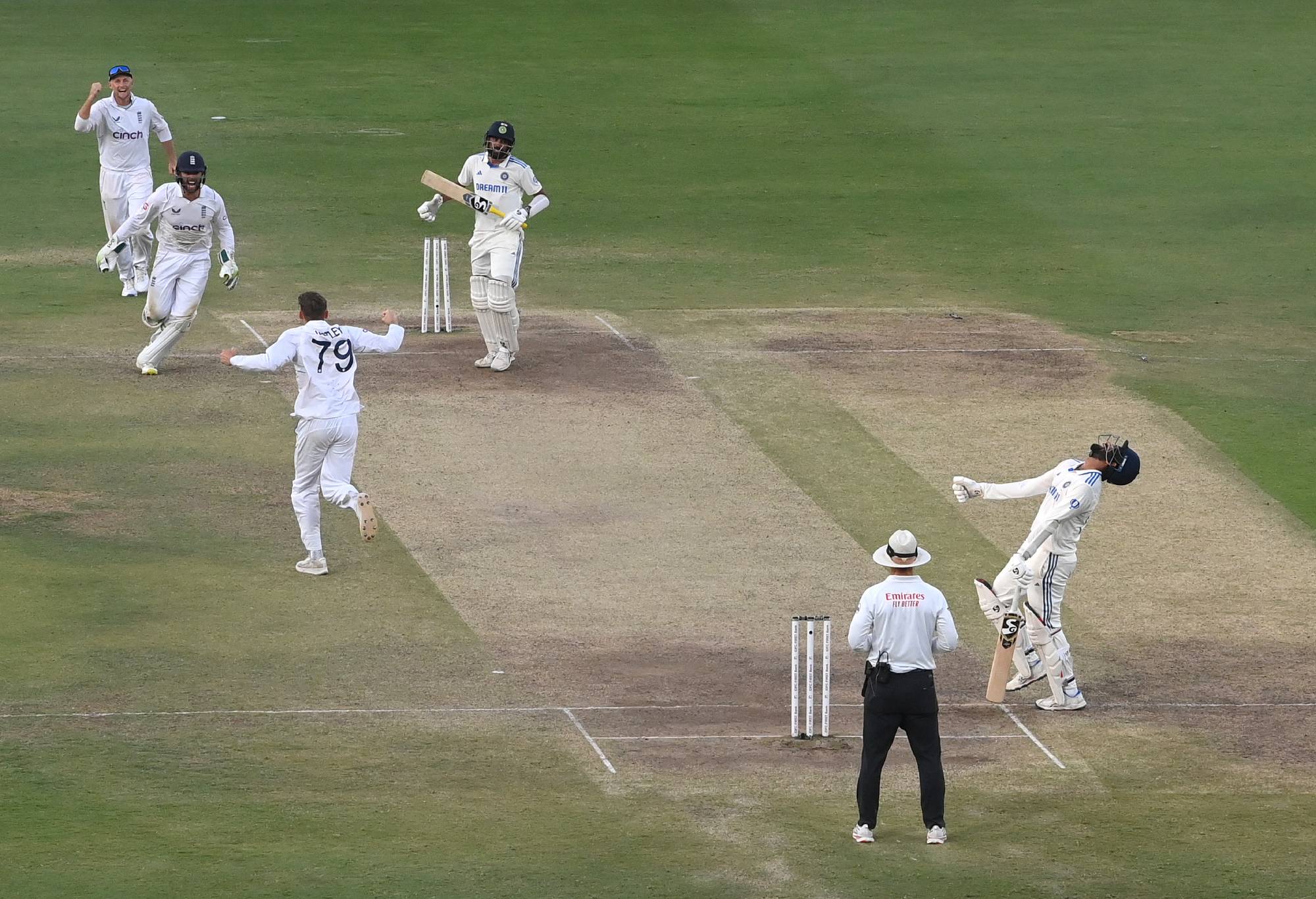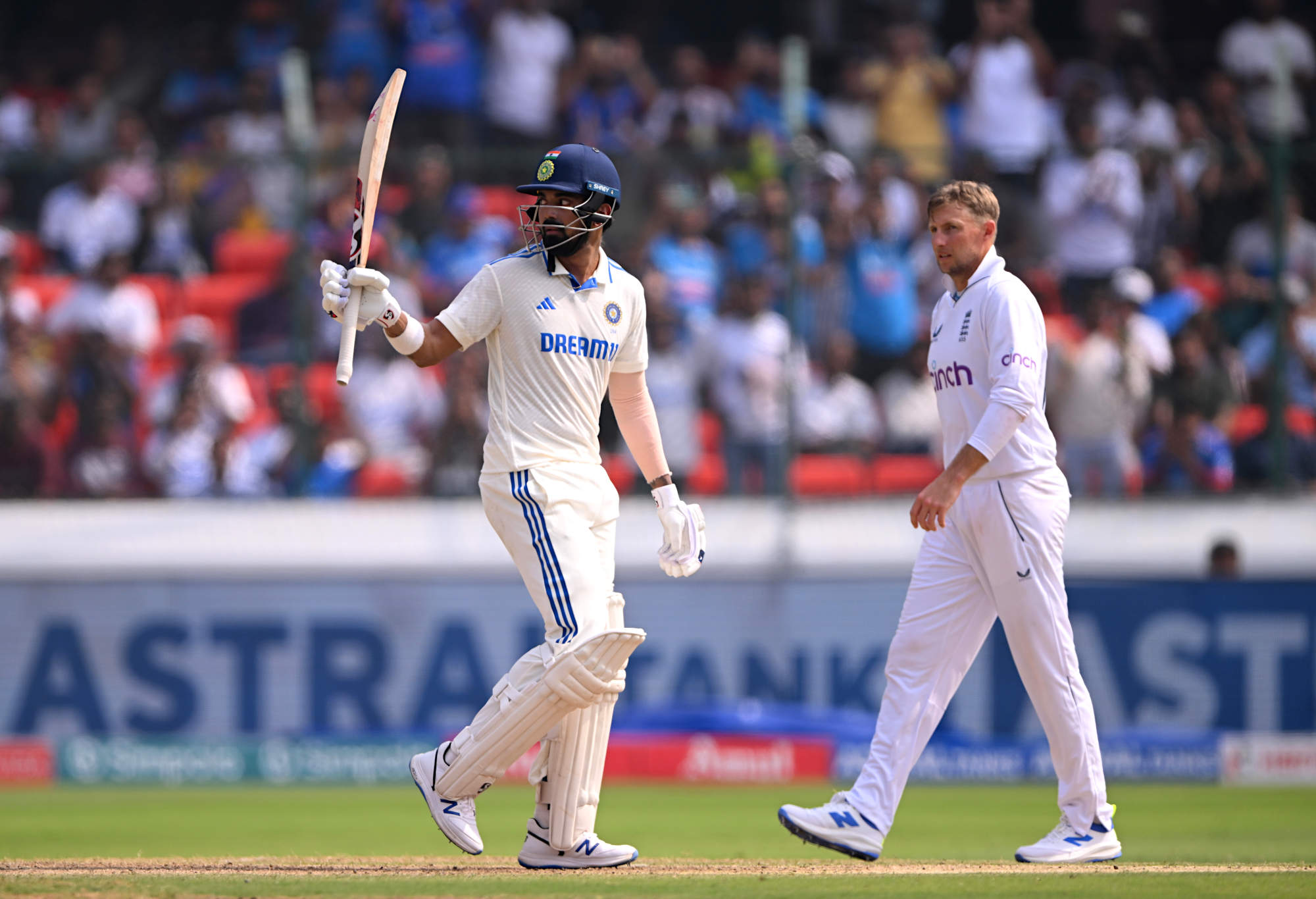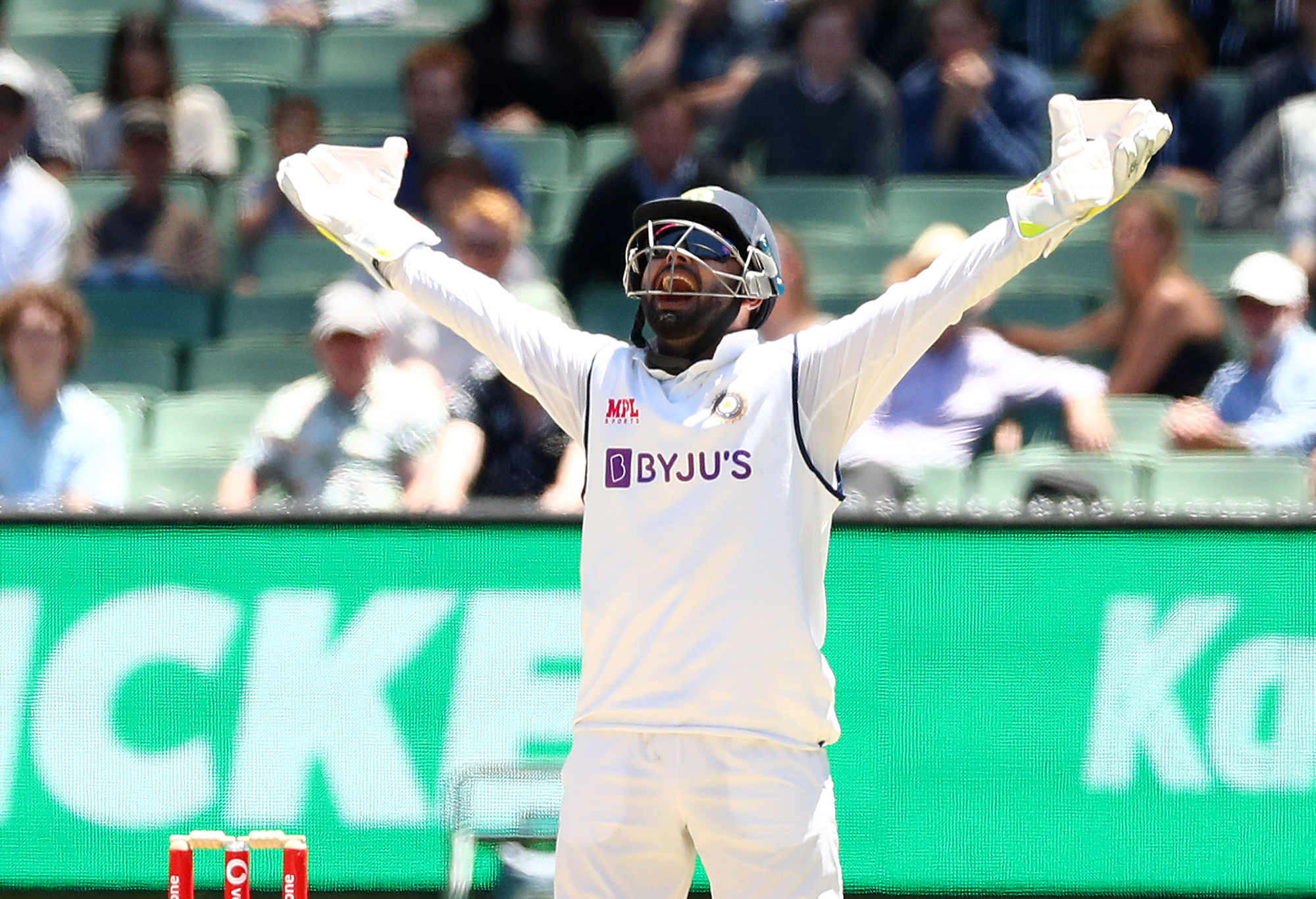Even those who supported India against England in Hyderabad will have to admit one thing: that was an incredible game of Test cricket.
Falling 190 runs behind in the first innings in India isn’t just a big challenge, it’s basically a death sentence. But Ollie Pope’s extraordinary 196 and Tom Hartley’s stupendous 7/62 in the final innings led England to the most improbable of victories.
Now, they simply have to navigate another four Tests in India. That’s all.
For the traditionalists, this is how it’s meant to be. The concept of the ‘Test Series’ has been significantly diminished in recent years, with most such events comprising just two matches; hardly a series at all.

English debutant Tom Hartley celebrates taking the winning wicket against India. (Photo by Stu Forster/Getty Images)
But this is where India comes in. India and England form two thirds of a triumvirate of international cricket teams who hold all the aces in terms of keeping Test cricket alive, and this game showed the flailing format can yet thrive.
India, England and Australia all have five-match series scheduled against each other in the near future and as far as the format is concerned, this is where the eyeballs are. Going back to June, we all remember the World Test Championship (WTC) Final between India and Australia at The Oval in England. This match alone – one with supposedly limited interest due to its freshness as a concept – drew 124 million viewers in India.
It’s easy to say, “but there’s a lot of people in India” and yes that’s true, but that’s still nearly one-tenth of the population tuning into a match in a very different time zone, in a format no one is meant to be interested in. This proves something; national pride and context matters.
Context matters
India uniquely has the power to shift the global conversation around what matters in cricket, and long, enthralling Test series against big nations can bring the format to the forefront once again. The World Test Championship provides context to Test cricket and a reason for the smaller nations to keep playing the format. India losing the first Test to England doesn’t just put them 1-0 down in the series, it also hurts them on the WTC table. And there’s a world champion awarded at the end of each WTC cycle; something Indians love being.

KL Rahul acknowledges a half century. (Photo by Stu Forster/Getty Images)
Before India’s historic 1983 ODI World Cup win one-Day cricket was something of a novelty, even an exhibition. But after the World Cup, cricket was now able to provide a sense of national pride it never had before in the country. By 2011, when MS Dhoni slapped a Nuwan Kulasekara half-volley down the ground for 6 to seal India’s second World Cup title at Mumbai’s Wankhede Stadium, cricket in India had actualised.
Despite this, the drop-off in the sense of importance of ODI cricket has been led mostly, ironically enough, by India.
The fast-paced, constant excitement of the Indian Premier League has transformed the way people see one-day cricket. There’s not a lot of interest in watching set batsmen nurdle part-time off-spinners around through the middle overs anymore, and the predictable nature of pitches often leads to a stalemate through this period. T20 cricket is just too attractive for those without seven hours in a day to consume cricket and let’s be honest, that’s almost everyone.
Making Test cricket great again
If India has the power to decide which formats matter, they can make Test cricket cool again.
Much has been made of England’s ‘Bazball’ style which is ostensibly, as Ben Stokes would say, designed to allow his teammates to play without a sense of fear. What this generally translates to is very high run rates and constant probing with ball in hand. But India can do the same. A home attack with all of Jasprit Bumrah, Ravindra Jadeja and R Ashwin feels like there is always something about to happen; often a wicket.

India’s Ravindra Jadeja celebrates a wicket. (Photo by Gareth Copley/Getty Images)
But the new guard of Indian batsmen are just as exciting – Yashasvi Jaiswal’s 74-ball 80 was a sight to behold, Shreyas Iyer strikes at almost 80 in first-class cricket and Shubman Gill seems to be able to score briskly without breaking a sweat. He just oozes style.
There’s specific motivation for teams to play this way. Draws are only worth 4 points on the WTC table, and wins 12. Playing for draws no longer makes sense unless a win is as good as impossible. The point is, Test cricket is speeding up and becoming more exciting.
Test cricket just matters more
For those of us who grew up with Tests as the centre of the cricket universe only to see them fall significantly behind T20 cricket in terms of popularity, seeing Shamar Joseph wheel away after taking care of Josh Hazlewood’s off stump was a glorious sight. It was quite honestly one of the most extraordinary Test wins in history, and an overwhelming sense of emotion hit. Why was my first thought when the entire team finally caught him on the other side of the boundary rope “It’s been 27 years since West Indies won here”? Why did Joseph break down in tears when he took his fifth wicket?

Shamar Joseph celebrates dismissing Travis Head. (Photo by Chris Hyde – CA/Cricket Australia via Getty Images)
Waking up the next day it occurred to me the ending was similar to the 2014 T20 World Cup, when Daren Sammy hit 34 off 13 balls, to seal a group win off the second last ball of the innings. That day, the entire West Indian team stormed onto the ground, Sammy himself took off like a prime Usain Bolt, and there were even some renditions of the most popular K-Pop dance at the time, Gangnam Style. It was the most T20 thing I’ve ever seen. But something was off about this scene: as the then Australian coach Darren Lehmann said at the time, the celebrations were “a bit over the top”. Now that was the comment of a fuddy-duddy, but I totally agreed.
This was because T20 cricket doesn’t bill itself as life and death, so why should viewers care as much when something dramatic happens? Sure it’s exciting, there’s constant action, but there is a sense that at the end of the day it’s only a bit of fun. Maybe sport should be this way. Regardless, Test cricket takes itself more seriously than that – probably to a fault, but that’s the way it is.
When Joseph took off I didn’t think of the 2014 World Cup game. Why? Well, it’s for the same reason Indians will never forget the moment Rishabh Pant finished off Australia at the Gabba three years ago; achieving the improbable over four or five days is just an infinitely better achievement than doing so for 40 overs. It means so much more. This isn’t to diminish T20 cricket, it is just reality.

India’s Rishabh Pant appeals. (Photo by Kelly Defina/Getty Images)
Test cricket means a lot to Indians
Let’s be honest, India would still be the most lucrative country for cricket by a mile if they didn’t play Tests at all. But something makes them care about it even if being world champions in either of the one-day formats would give an immeasurable sense of pride. Bumrah and Rohit Sharma didn’t have to become excellent Test cricketers to seal their legacy, but they did anyway. That said, win a WTC and that legacy will be that much greater.
Australia recently won the most improbable World Cup in India, but just say the words “‘Gabba 2021” or “Dravid and Laxman” and you’ll wipe the smile off their face immediately. Why is all of this the case? Test cricket just matters more.
When India wins a World Cup, it’s very very special for the country. But the cricket fraternity there still understands how important Test cricket is. Nothing will ever match the specific type of joy Indians get when they beat England or Australia in a Test series, and as it happens, I think they’re still very likely to beat England in this current series. It’s clear that’s something Indians desperately want to see; there was a crowd in excess of 32,000 on Republic Day.
The Indian test model
India is still committed to Test cricket. As the leading global influencers of what direction cricket will go at any given time, they can revitalise the format’s popularity. When the format has clear air from the IPL, the sense of importance and national pride takes over. With T20 franchise leagues popping up all over the world, it’s easy to think Test cricket will die, but let’s look at this as glass-half-full.

Cameron Green bats for the Mumbai Indians in the Indian Premier League. (Photo by Pankaj Nangia/Getty Images)
T20 cricket provides a financial base so strong in India they can still carve out a clear international window in their summer schedule and attract millions of eyeballs. Imagine a world, maybe five to ten years down the track, when places like South Africa and the West Indies have made so much money out of their domestic T20 competitions that they can allow clear-air for Test cricket, not just at home but abroad as well.
There would be no more weakened teams going to New Zealand or Australia. Maybe they could even create a pay structure that allows players to be very well rewarded for playing international cricket, just like in India. I can see that world.
India has led the way in the past, they will in the future as well.



































































































